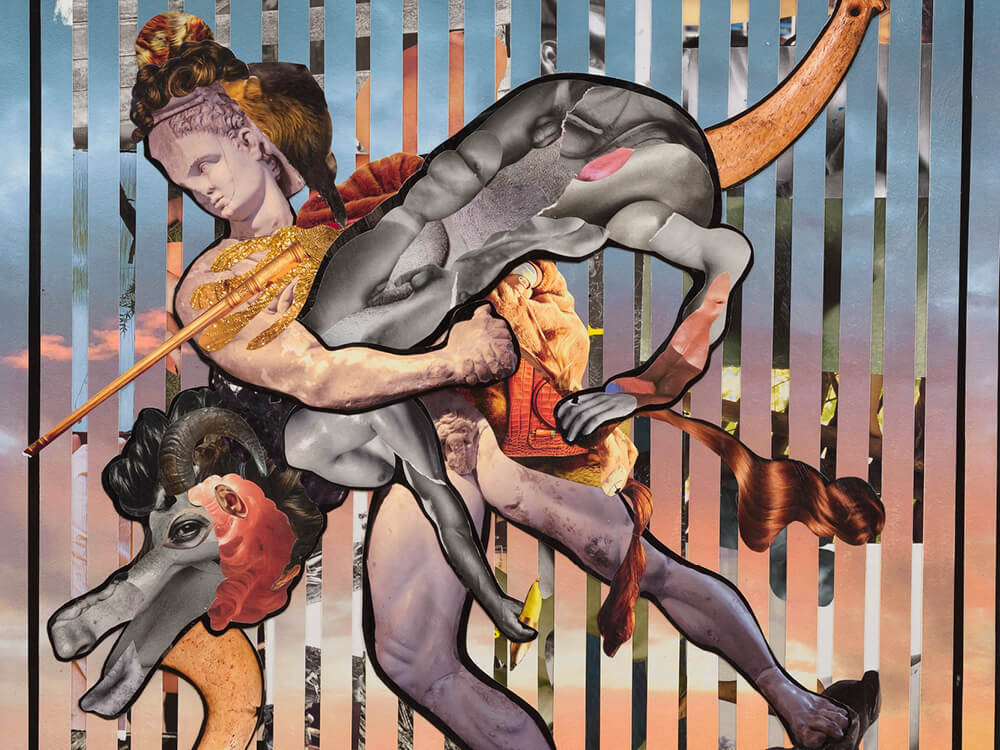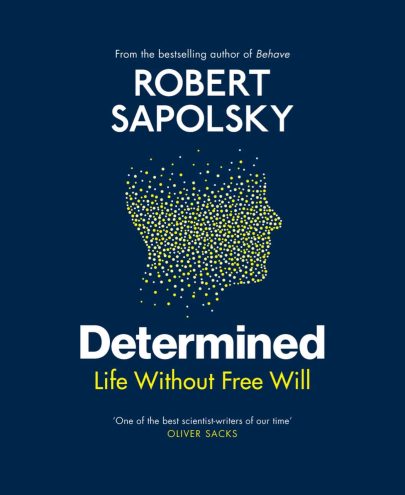Apr 3, 2020 Books
At the end of The Luminaries, Eleanor Catton acknowledged her debt to the authors of a sexually explicit astrology book, but their subsequent attempt to get in touch was ignored.
Quinn Cox and Stella Starsky have not read The Luminaries. They confess to this with the same faint air of apology as many did after it won the Man Booker Prize in 2013. “Is it really 848 pages?” asks Cox.
He and Starsky, New Yorkers partnered in love and work, are not alone in having balked at Eleanor Catton’s novel — but they may be in also appearing in its acknowledgements. Starsky and Cox are celebrity astrologers to the stars, credited with having taken the field from “new age” to “now age” with their racy 2003 bestseller Sextrology.
Known to some as “the Red Bible”, it caused a sensation on publication for its highly specific and sexually explicit assessments of all 12 star signs, split into men and women. A representative (and actually relatively restrained) gem pertaining to my own sign: “Every Pisces female, no matter how many homo or hen-pecked husbands she hides behind, is fairly itching to play Lady Chatterley to some raw and hunky gamekeeper.”
According to Starsky and Cox, Sextrology has been translated into 16 languages and sold more than 500 million copies — making it one of the bestselling astrology titles — and counts among its fans Russell Brand, Marc Jacobs, Kate Moss, Cameron Diaz and Charlize Theron. In 2004, it sparked a blogging frenzy when it was spied on a bookshelf behind Bill Clinton as he was being interviewed on CNN.
When critics referred to Catton’s drawing on principles of the zodiac, it is unlikely that anyone had in mind a “wonderfully dirty” exploration of star signs “from fantasies to favourite positions, erogenous zones to emotional needs”. Yet Catton writes (albeit in passing) that she is “indebted” to Starsky and Cox’s work, distinguishing it from the “extensive and sometimes hilarious” resources she found online.
“She talks about different sites and apps, but we’re the only astrologers that she namechecks,” says Cox. The first they heard of it was from a friend, a whole year after The Luminaries was published, in late 2014; Cox used the “Look Inside!” preview on Amazon to see for himself.
Afterwards, they emailed Catton’s agent, introducing themselves and inviting her to get in touch. They never heard back from the agent or from Catton herself. (And neither did I when I contacted them to ask Catton to corroborate Starsky and Cox’s account, if not give an interview).
As Starsky and Cox tell me this story five years later, over coffee at their East London hotel, it is clear that their feelings are still a little hurt, though not from a place of arrogance — more as if someone you liked and respected blanked you at a party, leading you to wonder if they may not feel the same way about you.
Warm, self-effacing, and cannily in sync (they are the first couple I have ever met who really do finish each other’s sentences), they seem as curious as I am about their response to Catton’s perceived snub — which, whether it was subconscious or not, was to just not read the book. “I’m very surprised I haven’t, because I’m a big reader,” says Starsky, effortlessly chic in an art-gallerist way, wearing all black and her silver hair in a chignon. “But I think at the time I thought, ‘Oh, everyone’s eating our lunch’ — which is ridiculous! It had nothing to do with us, really.”
As astrologers, Starsky and Cox had quickly distinguished themselves with their view that men and women of each sign were distinct from one another, effectively doubling the zodiac. Devoting 25-odd pages to each gender (they accounted for both heterosexual and same-sex attraction, which was highly progressive at the time; they now consider non-binary identities), Sextrology comes in at only a few hundred pages shy of Catton’s doorstopper.
Though the sex stuff gets the most attention, the bulk of the book is an “empirical study on steroids”, as Cox puts it, drawing on comparative religion, mythology, culture and history to assemble an archetype for each of the 24 signs. “You’re doing sort of literary criticism.”
The results are oddly engrossing in their specificity. We female Pisces, for example, chew each bite of food many times over, wear our hair wavy, speak out the sides of our mouth, “flaunt a gay-male pal” and are often somewhat “froggy or fetal” in appearance (think Liza Minnelli). We are inclined to disorders of the brain and feet, and turned on by — among a long list — hairless bodies, long fingers and toes, and “homewrecking”.
There is a risk that readers will not recognise themselves in these laundry lists and be turned off, says Starsky, but “75% of the time, we’re right on the money. If you clear off a bit of the detail and look at the centrepiece — that will be correct.”
The character studies are “powerful enough to sort of isolate” types of people, Cox says — leading him to The Luminaries. Catton has spoken of characters representing signs of the zodiac and being modelled on astrological archetypes. The first storyline is of a man who stumbles into a covert council of 12 men; in Sextrology there are 12 male character profiles, says Cox. “It did make me think, how much of our work did she actually use? I don’t even want to know. We didn’t want to bring ourselves more heartache, maybe … I think this is where I subconsciously didn’t read it.”
There is no evidence that Catton plagiarised from Starsky and Cox; she referred to many sources, and her grasp of astrological principles goes well beyond what can be gleaned from Sextrology. But it seems that — no doubt unbeknown to her, and inadvertently — her silence may have compounded Starsky and Cox’s sense of having been insufficiently recognised as ahead of their time.
Starsky and Cox (their professional pseudonyms, Starsky clarifies, “because no one names their children Stella Starsky and Quinn Cox”) met as teenagers on a year-abroad programme with Boston University, and bonded over their shared interest in astrology, metaphysics and the esoteric arts. Both went on to study astrology; Starsky is also a qualified psychologist, and they say Cox has psychic and intuitive abilities. What started out as a side hustle to their careers in fashion led, in 1998, to a gig writing his-and-hers horoscopes for Teen People magazine. The editor had asked the pair to guess her sign — “which was awful,” says Starsky, grimacing, “but I guessed it. She was like, ‘Wow, you’re amazing! Do you want a job?’ We took on these pseudonyms — and then these pseudonyms took on a life of their own.”
A publisher at HarperCollins “secretly” reading Teen People suggested that they write a book for adults — “and make it sexy”, says Cox. Their connections in the fashion world helped Sextrology gain a strong showing in Barneys, Selfridges, Harvey Nichols and Colette, and a lot of attention from the press. In 2006, they even collaborated on an astrology-inspired jewellery line, a full decade before such designs became ubiquitous (they intend to relaunch it this year).
But several other opportunities, for a television show and celebrity representation, fell through. Another book, Cosmic Coupling, followed in 2009, around the same time as they started focusing their energies on private consultancy. That now makes up most of their business, with clients committing to 12 monthly sessions plus call-ins (only on Wednesdays: “we have healthy boundaries,” says Cox).
To Starsky and Cox, it is “getting back to their roots” in the fashion and entertainment industries — just as the rest of the world has caught up with them. Now astrology is no longer elite or even very eccentric. A 2018 study found it is accepted by 29% of American adults. Starsky and Cox link the mainstream, millennial preoccupation with astrology to generalised anxiety about climate change and political instability, coupled with a preoccupation with the self fostered by social media. Popular apps such as The Pattern and Co-Star deliver highly personalised horoscopes in real time, while “astro-influencer” Chani Nicholas has turned a social media following into a New York Times-bestseller.
They have never even seen Co-Star: “That’s how much of a Luddite I am,” says Cox. “It’s not a hook-up thing?” But for the new generation of astrologers like Nicholas, reading Sextrology would have been a rite of passage. “We made the water safe and warm for them to come in,” he says. “Like, ‘You don’t have to be a kook to be an astrologer, you can be a fully functioning human and be proud of your beliefs.’ They do credit us with being the fairy godparents of this new age.”
“Which is an honour,” adds Starsky.
By casting astrology — once “a little kooky, a little weirdo”, says Starsky; “granola-encrusted”, says Cox — through a lens of sex and celebrity, they helped to usher it into the mainstream. But it was, at times, an uphill battle, they say, and others are now reaping the rewards. “Innovators have a tough road,” says Cox. “We were slightly ahead of our time and we opened the door for that next generation to be able to do astrology in the ‘now age’ – as opposed to the new age.”
Whether they are guiding the masses with Sextrology or working directly with clients, Starsky and Cox say their aim is to help people find a balance between fate and free will — to work with “what energies are available to them, what they are being cosmically assisted to do”, so as to become fully themselves, says Cox. He makes no distinction between influencing individuals, and influencing their art. “They come to us through our work because it resonates, it’s smart and insightful and funny and those things. That’s how Eleanor Catton reacted to the work and was likewise inspired — it added to her artistic achievement.”
Starsky and Cox are surprised to learn that a television adaptation of The Luminaries by BBC Two and TVNZ is coming this year — but not that surprised. Cox tells me that my email out of the blue, asking to talk to them about The Luminaries, had in fact been of a piece with other inquiries they had received lately. “Something synchronistic is going on for us this week — on this subject, specifically.”
Yesterday, for example, he and Starsky had met with a television producer who had contacted them about a potential consulting role — of the kind that they could feasibly have played in The Luminaries adaptation, they say, had there been a relationship. Not only that, but the show proved to be the same, “very specific” concept that they had had together — and discussed, in detail, the ins and outs of — in Paris five years ago.
To listen someone telling them about an idea that they had already had was proof enough to Cox of what he calls “the faith factor”, the middle ground between free will and destiny that he and Starsky aim to operate in. “We always say, ‘Most things don’t happen, but everything happens eventually.” Perhaps even, one day, an email from Eleanor.
This piece originally appeared in the March-April 2020 issue of Metro magazine, with the headline ‘Signs of the times’.






